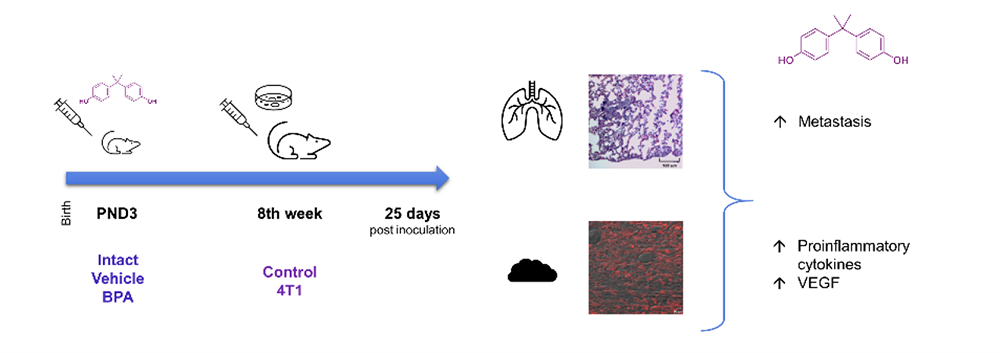Background: Metastasis is a complex process that involves the spread of the tumor to distant parts of the body from its original site. Metastatic dissemination represents the main physiopathology of cancer. Soluble factors such as cytokines have been closely related to breast cancer (BC) metastasis. Bisphenol A (BPA) is an endocrine disrupting chemical compound with estrogenic properties, which exposure in the early stages of neonatal life leads to an increase in the size and weight of breast tumors and cellular changes in the tumoral immune microenvironment. Methods: Thus, we used female BALB/c mice that were exposed neonatally to a single dose of BPA. Once sexual maturity was reached, a mammary tumor was induced injecting 4T1 cells in situ. After 25 days of injection, we evaluated endocrine alterations, cytokine expression, tissue alterations denoted by macro and micro metastases in the lung, and metastasis-induced cell infiltration. Results: BPA neonatal treatment did not show significant endocrine alterations. Nevertheless, BPA induced a great rate of metastasis to the lung associated with higher intratumoral expression of IL-1b, IL-6, IFN-g, TNF-a and VEGF. Conclusions Our data suggest that cytokines are key players in BC metastasis induction, and that BPA is a risk factor to be considered. This knowledge must be considered with the aim of recognizing environmental pollution in the clinical history of patients to possibly counter BC metastases.

